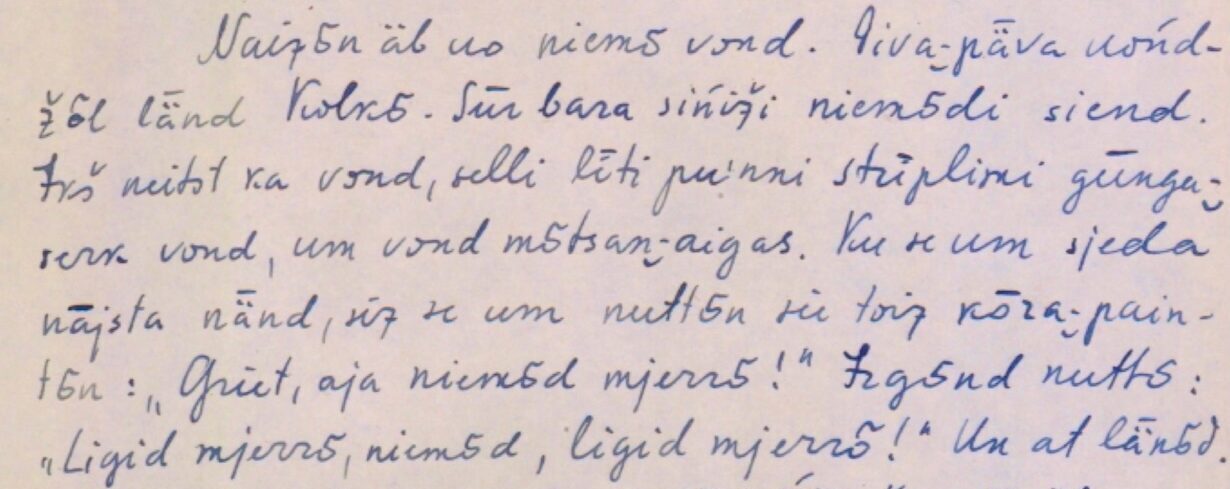
Typological shift in Estonian and Southern Finnic (ESTTYP)
Uuritavad keeled
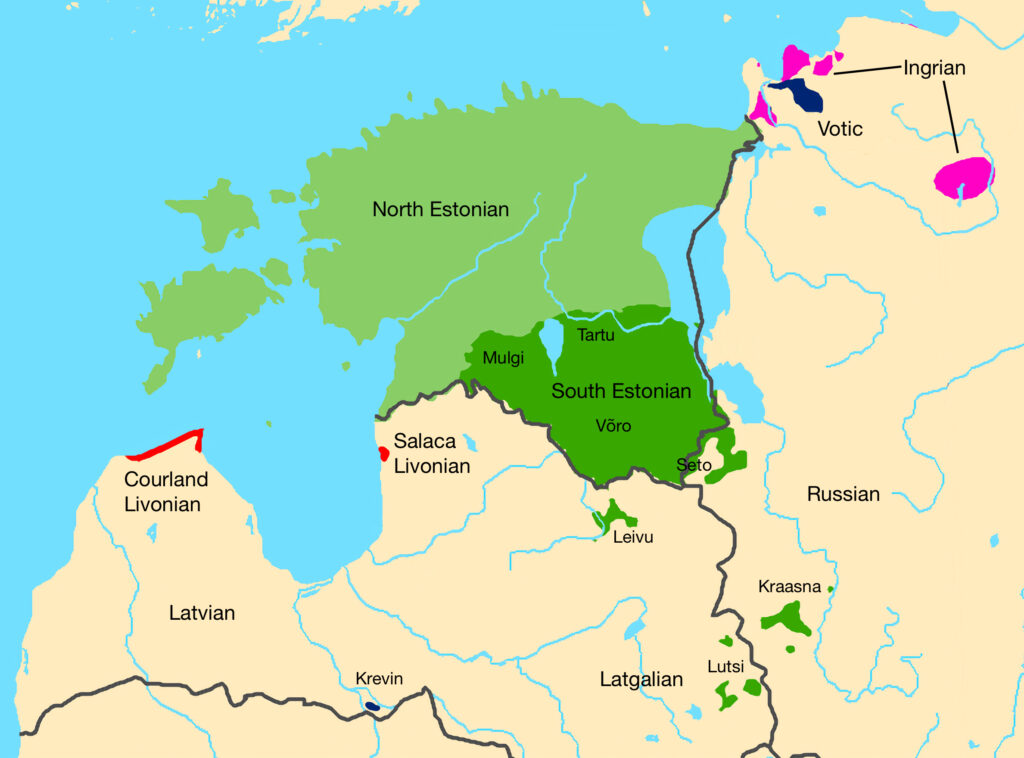
This map is a modified version of two maps created by Timo Rantanen et al. as part of the Uralic Language Atlas: Map 1, Map 2.
These modifications were made by Uldis Balodis in the process of creating this site.
(1) Estonian language area
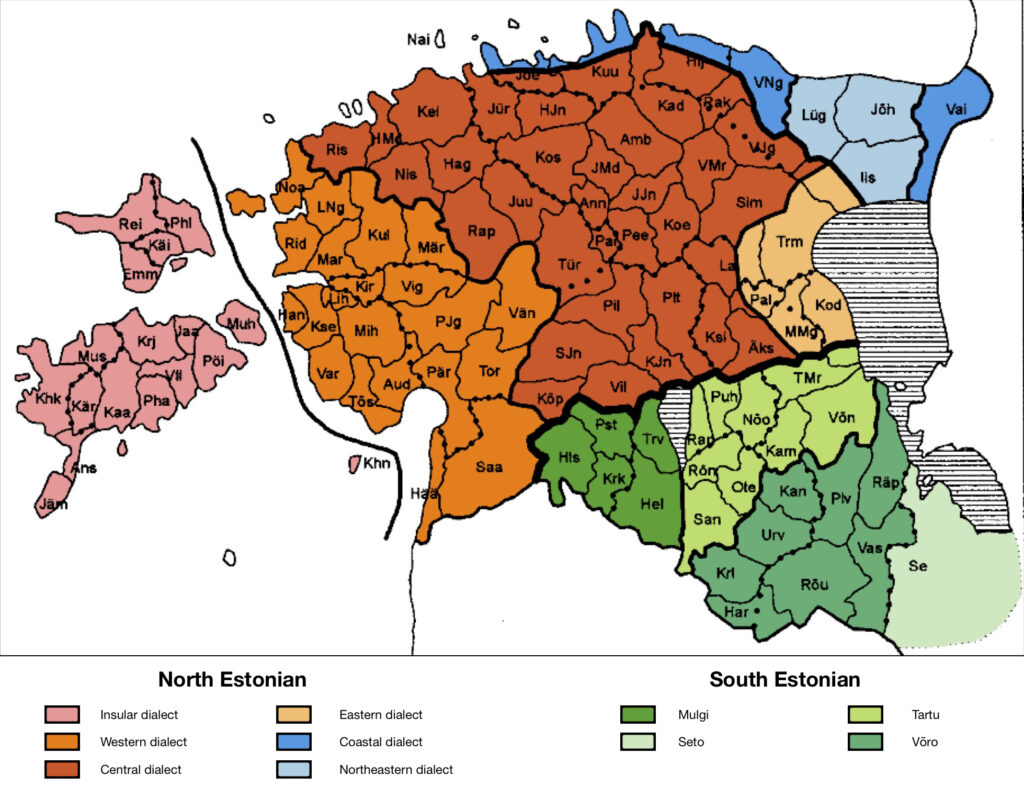
This map is a modified version of a map that appears in the 3rd edition of Eesti murded ja kohanimed (Estonian dialects and placenames).
These modifications were made by Uldis Balodis in the process of creating this site.
a. Common Estonian
Estonian (ISO 639-3: est, ekk, Glottocode: esto1258) is the official language of the Republic of Estonia and one of the official languages of the European Union. As of 2022, Estonian was spoken by approximately 1.2 million people worldwide. The earliest examples of written Estonian date to the 16th Century. Work to standardise Estonian began in the 19th Century and the modern standard language is based on North Estonian. Over its history, Estonian has been in close contact with the Baltic, Germanic, and Slavic languages showing signs of this contact in its vocabulary and morphosyntax. Estonian is especially noteworthy for its three vowel and consonant quantity degrees (short, long, overlong), which manifest as a length ratio between syllables.
Photo: Estonian flags on Midsummer’s Day. Source: Uldis Balodis; Kuressaare, Estonia, 2014.
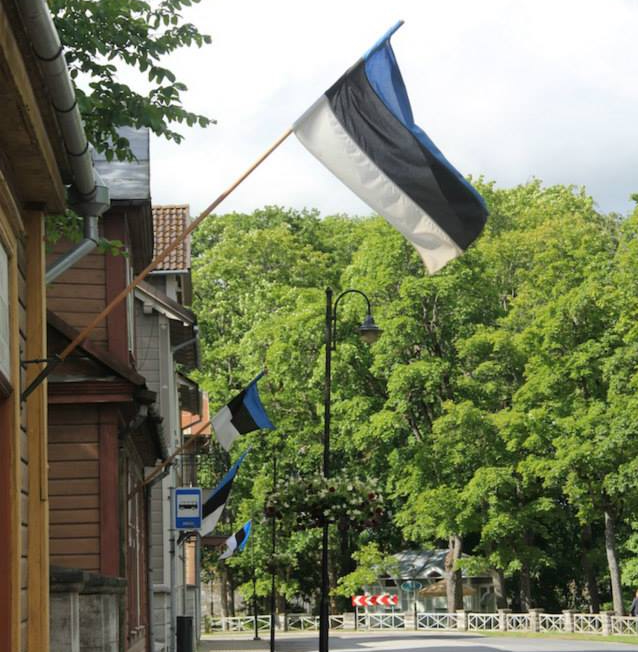
b. North Estonian
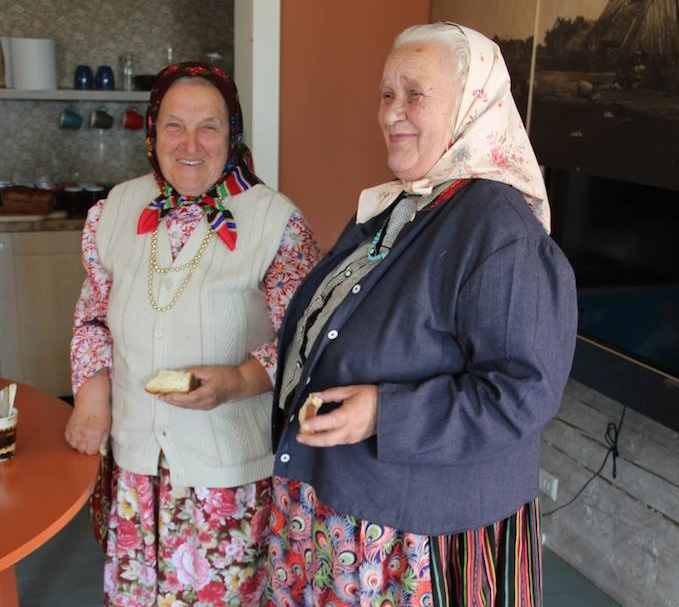
Insular dialect
The insular dialect (Glottocode: sart1250) is spoken on the islands of western Estonia from Kihnu in the south to Hiiumaa in the north. This area and the neighboring coastal regions of mainland Estonia were historically also inhabited by Swedish speakers and as a result, the insular dialect shows a variety of Swedish influences including a Swedish-like sing-song intonation and lexical borrowings from Estonian Swedish, e.g., the words trasu ~ träsu ‘rag’, krenkima ~ kränkima ‘to be ill’ are used on Hiiumaa Island. The language of Kihnu Island is the most divergent of the Insular subdialects and includes sound changes not seen elsewhere in Estonian, e.g., cf. Kihnu jõrm, njapp, and Standard hirm ‘fear’, näpp ‘finger’. The Kihnu subdialect is also the only North Estonian variety to have õ-harmony, e.g., cf. Kihnu olõ, tugõv with Standard ole ‘be’, tugev ‘strong’.
Photo: Kihnu ladies at the Kihnu Museum during a meeting of the Kihnu Language Working Group. Source: Uldis Balodis; Linaküla, Kihnu Island, Estonia, 2014.
Western dialect
The western dialect (Glottocode: laan1234) is spoken in western and southwestern mainland Estonia in the districts of Läänemaa and Pärnumaa. The transition between the western and central dialect is gradual and certain western features are found even in the central dialect area. The western and insular dialects, however, show greater reduction of unstressed syllables than in the central dialect, e.g., Western saarlest and Standard saarlased ’islanders’. The western dialect also shows replacement of intervocalic v with b, e.g., Western kõba kibi vs. Standard kõva kivi ‘hard stone’; loss of v before the labial vowels u, ü, ö, e.g., Western sui vs. Standard suvi ‘summer’; and simplification of word-initial consonant clusters, e.g., Western leit vs. Standard kleit ’dress’. Coastal areas (Noarootsi, Vormsi) historically inhabited by Swedish speakers also show Swedish influence, while southern areas (Häädemeeste, Saarde) show both Mulgi and Livonian influence.
Photo: Coastal scene. Source: Uldis Balodis; Tahkuranna, Estonia, 2023.
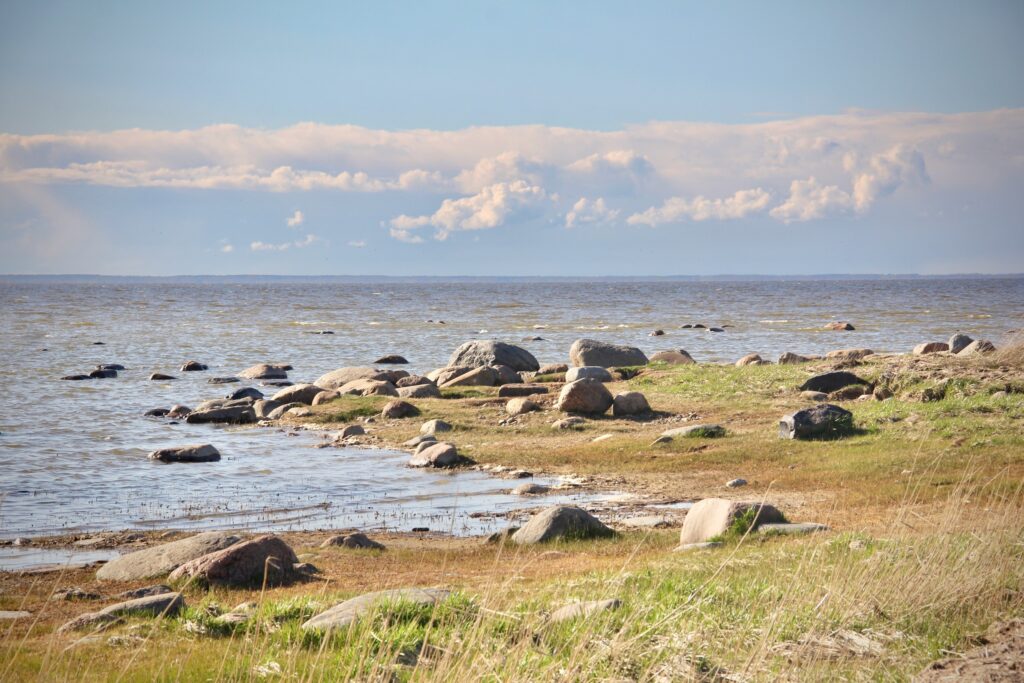
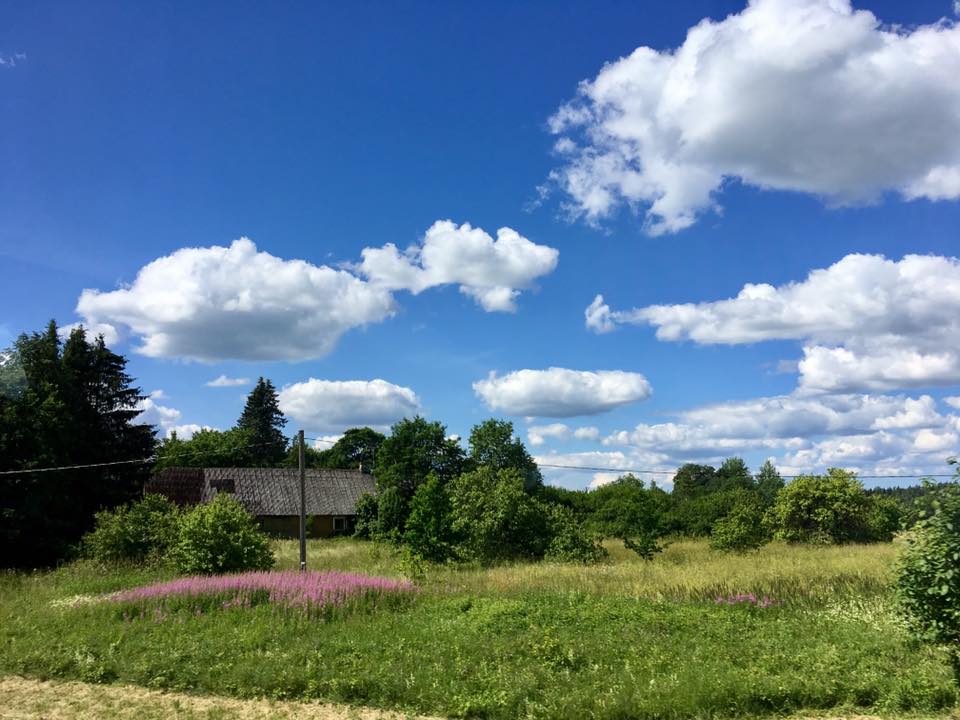
Central dialect
The central dialect (Glottocode: kesk1234) covers an extensive area – approximately one-third of the territory of Estonia – but is less uniform than other Estonian dialects and instead forms a large transitional zone between them and, as such, shares features with Standard Estonian. For example, the vocabulary of the central dialect overlaps to a large extent with the core vocabulary of Standard Estonian. Features regarded as characteristic for the central dialect include diphthongization of long vowels, e.g., Central põesas, nüid vs. Standard põõsas ‘bush’, nüüd ‘now’; pluralization using a generalized de-form, e.g., Central jalgadel, külades vs. jalul ‘on one’s feet’, külis ’in villages’.
Photo: A farmhouse in the central Estonian countryside. Source: Uldis Balodis; 2019.
Eastern dialect
The eastern dialect (Glottocode: idae1234) is spoken in the coastal region along the western and northwestern coast of Lake Peipsi in easternmost Estonia. The eastern dialect shows similarities with the northeastern dialect as well as the Votic language in that, e.g., the vowel õ is common and ss is used in place of st, e.g., Eastern issun, mussad, vedess vs. Standard istun ‘I sit’, mustad ‘black ones’, veest ‘from (the) water’. The eastern dialect also shows similarities with South Estonian forms such as the use of an n-marked inessive, e.g., Eastern ilman vs. Standard ilmas ’in (the) air’, as well as similarities with both Seto and the northeastern dialect in its use of -st to mark the translative, e.g., Eastern suurest mehest vs. Standard suureks meheks ’into a big man’. The eastern dialect is also noteworthy within Finnic for its unique forms of the negative verb: Eastern esin õle, esid õle, es õle, esimä olõ, esittä õle, esid õle vs. Standard Estonian ma ei olnud ‘I wasn’t’, sa ei olnud ‘you (sg.) weren’t’, ta ei olnud ‘s/he wasn’t’, me ei olnud ‘we weren’t’, te ei olnud ‘you (pl.) weren’t’, ne ei olnud ‘they weren’t’. The eastern dialect is also known for the extensive documentation of the archaic Kodavere subdialect conducted by linguist Lauri Kettunen in the 1910s.
Photo: Village street in Kallaste village on the shore of Lake Peipsi. Source: Uldis Balodis; Kallaste, Estonia, 2022.
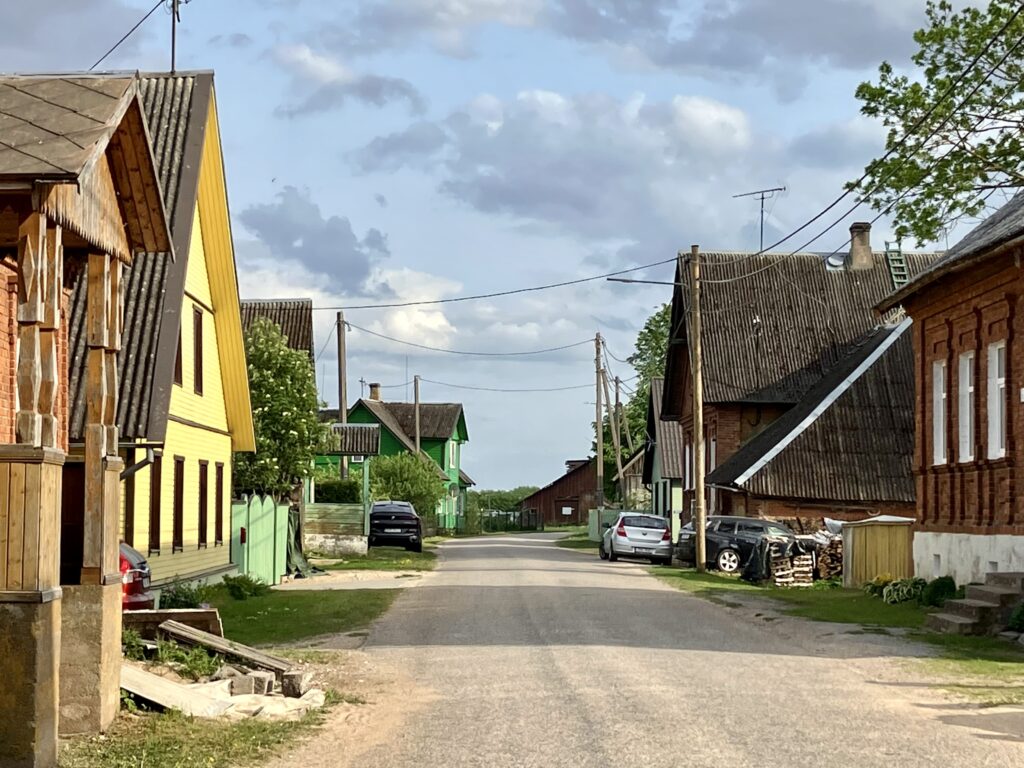

Coastal dialect
The coastal dialect is spoken along the extreme northern coast of Estonia and from an area just west of Tallinn to the western edge of Ida-Virumaa and then along a strip between the northeastern dialect and the Estonian-Russian border in Ida-Virumaa. The vowel õ is absent and the long and overlong grades are not distinguished in the coastal dialect. The coastal dialect shows similarities in its vocabulary with Finnish. Another noteworthy feature of the coastal dialect is that its third-person singular present-tense verb forms are unmarked, e.g., Coastal näke, viska vs. Standard näeb ‘s/he sees’, viskab ‘s/he throws’. The conditional mood can be marked with -isi or -ksi, e.g., Coastal veisin, veiksin vs. Standard ma võtaks ‘I would take’.
Photo: A view of Nigula homestead, Natturi. Source: Lembit Odres, 1972, ERM Fk 3068:1873
Northeastern dialect
The northeastern dialect is spoken from the northern coast of Lake Peipsi to the northern coast of Estonia in Ida-Virumaa. The vowel õ is more common in the northeastern dialect than in Standard Estonian, e.g., cf. Northeastern õli, kõht, õtse vs. Standard oli ‘was’, koht ‘place’, otse ‘straight’. The northeastern dialect also shows similarity in its vocabulary to Votic. The Votic speech area is just to the east of the area where the northeastern dialect is spoken and historically there were also some Votic communities living within this part of Estonia, e.g., the mixed Estonian-Votic-Russian community near Iisaku known as the Poluverniki ‘half believers’ who mixed Orthodox and Lutheran traditions. While third-person singular present-tense verb forms are marked with -b as in Standard Estonian, conditional verb forms in the northeastern dialect are marked with -s(i) or -(i)ses(i), e.g., Northeastern tegesin, tegesesin vs. Standard ma teeks ‘I would make’.
Photo: A view of Pirda homestead, Jõuga village, Iisaku kihelkond. Source: Uudo Rips, 1952, ERM Fk 1203:20
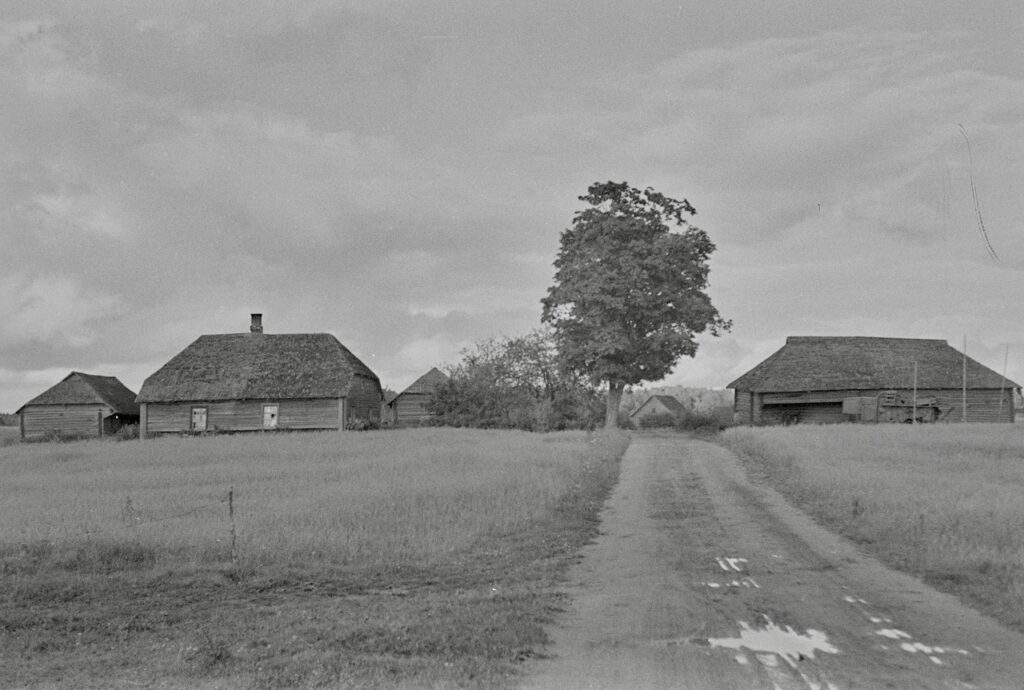
c. South Estonian
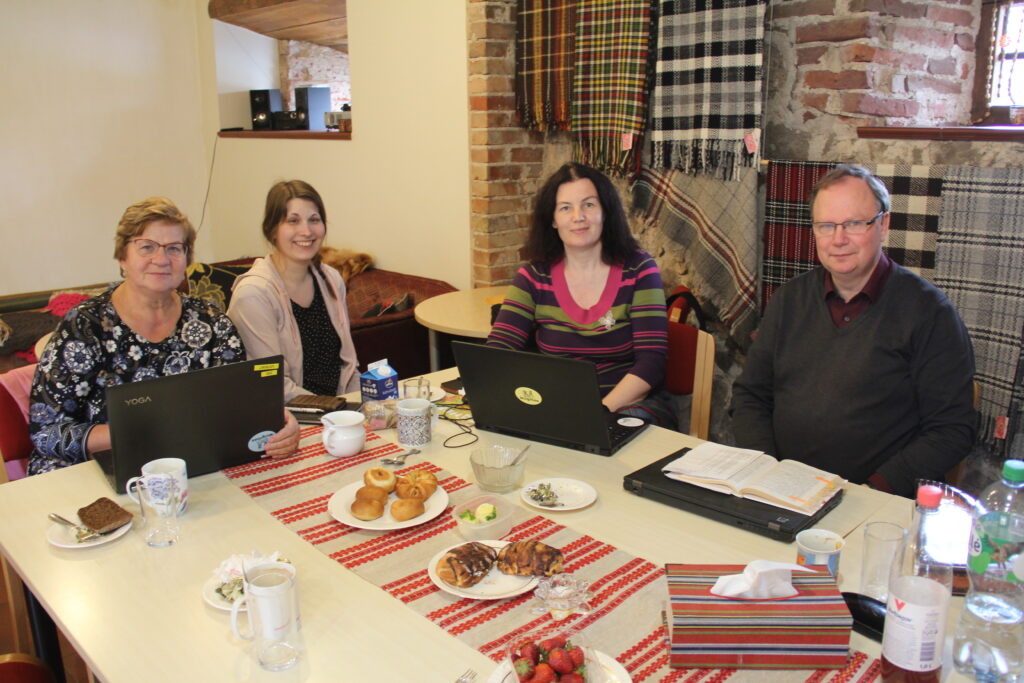
Mulgi
Mulgi (Glottocode: mulg1249) is the westernmost South Estonian variety and is spoken west of Lake Võrtsjärv and south to the Latvian border. Historically, Mulgi was also spoken in Latvia in northern Vidzeme. According to the 2011 Estonian census, Mulgi was spoken by 9698 people at that time. Of the written South Estonian varieties, the Mulgi written language is the most recent to be developed. A Mulgi dictionary is currently being compiled and the Mulgi-language newspaper Üitsainus Mulgimaa is published monthly. The Mulgi Culture Institute organizes work and events on Mulgi language and culture. Of the South Estonian varieties, Mulgi is the most similar to North Estonian – specifically the western dialect which it borders. Eastern Mulgi subdialects are more similar to the Tartu variety of South Estonian and show more typical South Estonian features. A characteristic feature of Mulgi is the change of a and ä to e beginning with the third syllable, cf. Mulgi armasteme vs. Standard armastama ‘to love’. Due to contact with Latvian and Livonian, Mulgi also has vocabulary in common with both, cf. Mulgi puuts, toŕt and Latvian pūce ‘owl’, stārķis ‘stork’; Mulgi kurtma, uisk vs. Salaca Livonian kurt ~ kūrt ‘to stand’, ūšk ‘worm’.
Photo: The Mulgi Dictionary Working Group (left to right: Alli Laande, Marili Tomingas, Kristi Ilves, Karl Pajusalu). Source: Uldis Balodis; Mustla, Estonia, 2022.
Seto
Seto (Glottocode: seto1244) is the easternmost South Estonian variety and is spoken in a region straddling the present-day Estonian-Russian border. This division came as a result of annexation of this territory to Russia during the Soviet occupation of Estonia. Seto speakers live on both sides of this divide. According to the 2011 Estonian census, Seto was spoken by 12,549 people at that time. A vibrant written tradition has existed in Seto for decades with numerous publications appearing in Seto on a regular basis. Work on Seto language and culture is overseen by the Seto Institute and the Seto-language newspaper Setomaa is published monthly. In addition to ä, ü, õ vowel harmony, some Seto varieties also show limited ö harmony, e.g. jänö ‘bunny’. Seto is unique in showing h in all positions including in the inessive and word-finally, e.g., hõbõhhõh ’in silver’, imeh ‘miracle’. Word-final glottal stop serves important grammatical functions in marking the second-person singular imperative and nominative plural, e.g., annaq ‘give!’, tarõq ‘rooms’. Most consonants can be palatalized. Seto also has many Russian loanwords, e.g., Seto paaba, tsuuda vs. Russian баба (bába) ‘old woman’, чудо (čúdo) ‘miracle’. Seto and Võro share a closer linguistic relationship within South Estonian, but are distinguished from each other especially by vocabulary and pronunciation. Culturally, the traditionally Lutheran Võro speakers and Orthodox Seto speakers are also distinguished by religion. The Kraasna and Lutsi language island varieties share a particularly close linguistic relationship with Seto.
Photo: The “Seto tsäimaja” (Seto Teahouse) with its name written in the Seto language. Source: Uldis Balodis; Värska, Setomaa, Estonia, 2019.
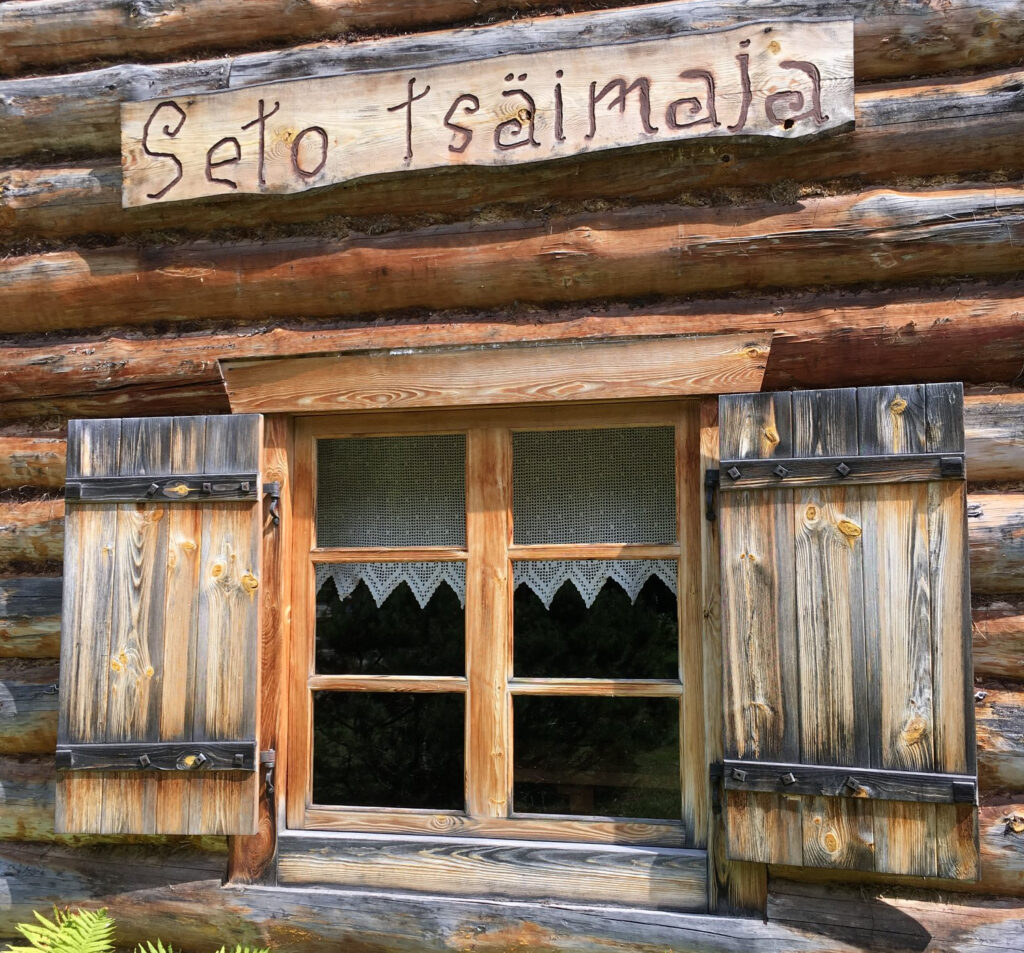
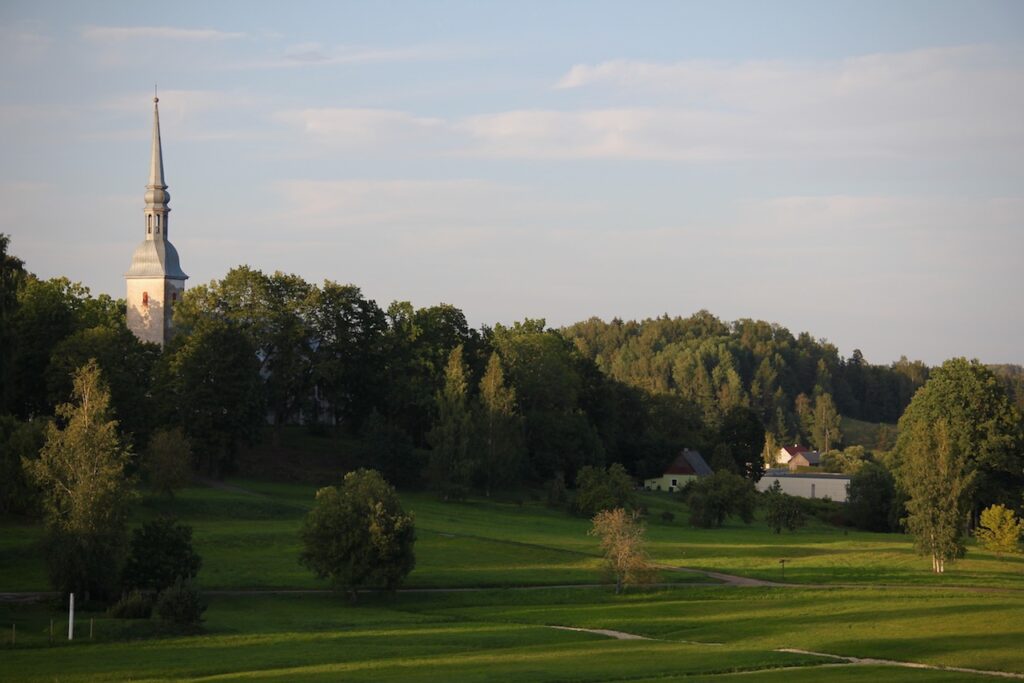
Tartu
The Tartu variety (Glottocode: tart1244) of South Estonian is spoken across the northern part of the South Estonian speech area, roughly between Lake Võrtsjärv and Lake Peipsi north of the Võro-speaking area. According to the 2011 Estonian census, the Tartu variety was spoken by 4109 people at that time. The literary form of South Estonian – called the Tartu language – emerged between the 17th and 19th centuries and was based on the Tartu and Võro varieties of South Estonian. The Tartu variety is most similar to Mulgi. Differences can be seen, for example, in the formation of illative case forms – the Tartu illative ending is-de, while Mulgi uses -s(se), e.g., Tartu kambrede, Mulgi kamres ’into the rooms’. Tartu is also unique in its use of personal endings on past participle and negative forms, e.g., olluva ‘they have been’, nännümi ‘we have seen’, ei annava ‘they don’t give’ (cf. Standard Estonian nad on olnud, me oleme näinud, nad ei anna). Tartu subdialects bordering North Estonian in the north, Mulgi in the west, and Võro in the south show additional similarities to these varieties.
Photo: St. Mary’s Lutheran Church near Otepää. Source: Uldis Balodis; Otepää, Estonia, 2019.
Võro
Võro (ISO 639-3: vro, Glottocode: voro1243) is spoken across southeastern Estonia from Lake Peipsi to the Latvian border, south of the areas where the Tartu variety is spoken and west of Setomaa. Võro is also still spoken to a limited extent in neighboring areas of Latvia, e.g., Vana-Laitsna (Latvian Veclaicene). Võro is the most widely-spoken South Estonian variety. According to the 2011 Estonian census, Võro was spoken by 74,499 people at that time. Work on Võro language and culture is overseen by the Võro Institute and the Võro-language newspaper Uma Leht is published twice a month. As noted above in the description of Seto, Võro and Seto share a particularly close relationship with each other within South Estonian and, indeed, have sometimes been described as two sub-varieties of a single South Estonian dialect. Differences, however, can be seen across both varieties. For example, Seto shows influence from Russian in its pronunciation of h and l. Many common words have different pronunciations, e.g., Võro hää, Seto hüä ‘good’, Võro häste, Seto hõste ‘well’, Võro egä, Seto õga ‘any’ (cf. Standard Estonian hea, hästi, iga). Morphological differences include different translative endings: Võro uses -ss, while Seto uses -st. Both Võro- and Seto-like forms are found in the Lutsi language island variety.
Photo: Two Men waiting at a bus stop. Source: Uldis Balodis; Orava, Võromaa, Estonia, 2019.
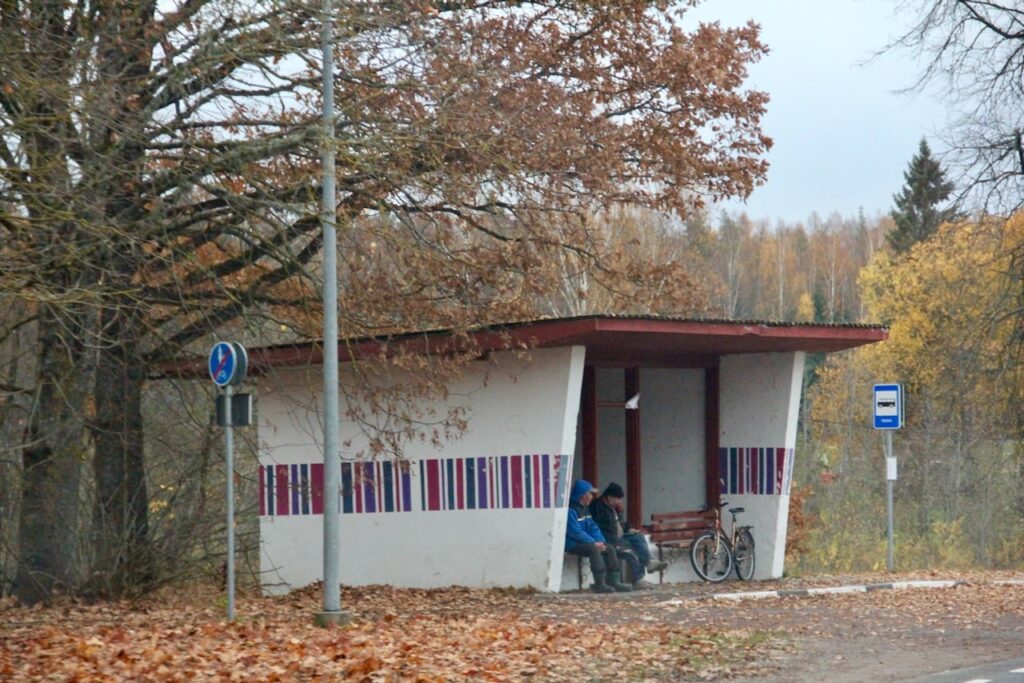
(2) Finnic languages and varieties in Latvia
a. South Estonian language islands
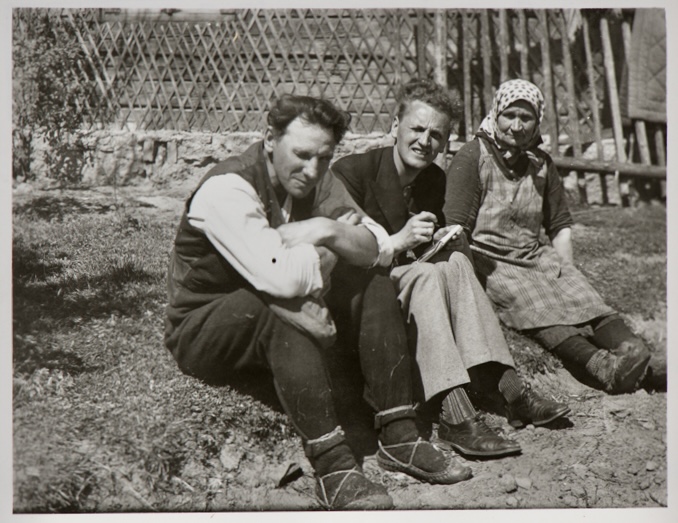
Leivu
Leivu (Glottocode: leiv1235) is the earliest variety of South Estonian to have split off from the historical South Estonian language. Thus, Leivu is a more distant relation to Lutsi, Kraasna, Võro, and Seto than these other varieties are to each other. Leivu may be the modern descendant of the undocumented language of the historical land of Atzele in modern-day northeastern Latvia. The last known fluent speaker of Leivu was from Pajušilla (Kārklupe) village and died in 1988. As with the other Southernmost Finnic varieties, which no longer have living fluent speakers, Leivu descendants are aware of their heritage. Project researcher Pire Teras has described the characteristics of the Leivu sound system and its unique prosodic features. Leivu also has numerous borrowings from Latvian, e.g., bikšikseq ‘pants (diminutive)’, zenʹtʹ, brougan, laimig, daužʹma, cf. Latvian bikses ‘pants’, zēns, zeņķis ‘boy’, brūtgāns ‘fiancé, groom’, laimīgs ‘happy’, dauzīt ‘to pummel’. In addition to its Latvian borrowings, Leivu is also special in having developed the beginnings of contrastive broken tone or stød. This feature is characteristic of Latvian and is also fully contrastive in Livonian, while existing as an occasional variant pronunciation in Lutsi and probably also in Krevin Votic. The Leivu people and their communities are further described here.
Photo: Estonian linguist Paul Ariste (center) with Leivu speakers Alfred Peterson (left) and Alide Peterson (right). Source: Valter Niilus, 1935, Paikna (Paiķēni), Latvia, ERM Fk 724: 3
Lutsi
Lutsi is characterized by extended, intense contact with Latvian and Latgalian as well as with Russian, Polish, Belarusian, and Yiddish. In the late 19th century, Lutsi was spoken in several dozen villages north, east, and south of the city of Ludza in southeastern Latvia (in the historical Mērdzene (Mihalova), Pilda, Nirza, and Briģi (Janovole) parishes). The final speakers lived in the villages of Jāni külä (Lielie Tjapši) and Kirbu külä (Škirpāni) south of Ludza. The last fluent speaker lived until 1983, the last conversational speaker died in 2006, the last partial speaker died in 2014. In the 2020s, several Lutsi rememberers remain. Lutsi descendants are aware of their heritage and view it positively. There are early efforts at language revitalization. Project researcher Uldis Balodis has published a Lutsi language and culture primer. Lutsi, like other Finnic varieties spoken in Latvia, has broken tone or stød, but only as a variant pronunciation of certain intervocalic consonants. Lutsi shows forms characteristic of both Seto and Võro. Thus, the Seto-like forms hüä, höste, õga but also the Võro-like egä all occur in Lutsi. Likewise, Lutsi has both the h-inessive (found in Seto and Võro) and the n-inessive (found in western Võro) as well as the st-translative (found in Seto) and the s-translative (found in Võro). The Lutsis and their communities are further described here.
Photo: Lutsi descendants with project researcher Uldis Balodis at the release of the Lutsi language and culture primer. Source: Uldis Balodis; Ludza, Latvia, 2020.
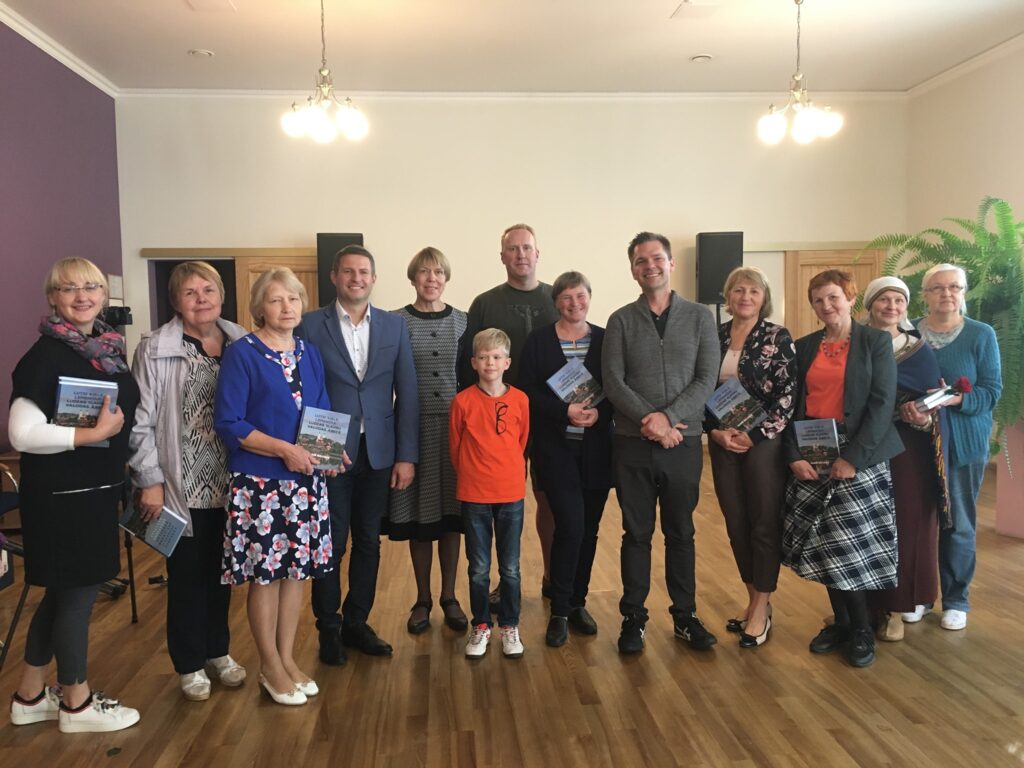
b. Livonian
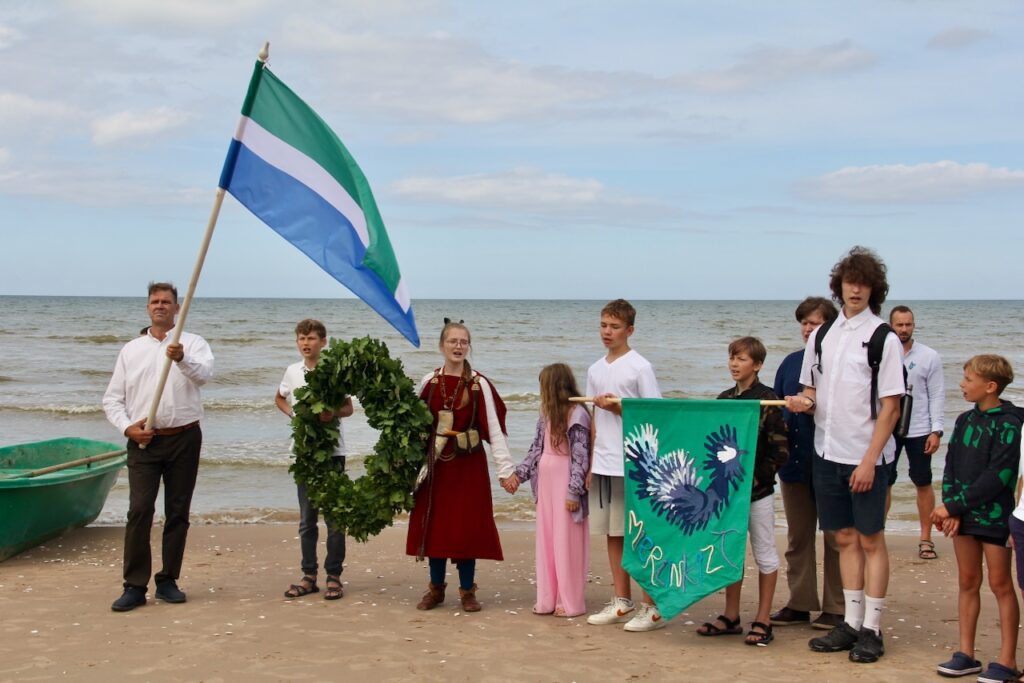
Courland Livonian
The Courland Livonians (ISO 639-3: liv, Glottocode: west1760) historically lived in a string of fishing villages along the northern coast of Courland (Kurzeme) in western Latvia in an area known as Līvõd rānda (the Livonian Coast). In the 1950s, the Courland Livonians were forced to leave their native coast due to militarization of the area by the Soviet occupation regime. Today most Livonians live in Rīga, Ventspils, and Kolka. In the 2020s, there are ~20 conversational (mostly L2) speakers and ~200 individuals with basic knowledge of Livonian. Some of the L2 speakers are linguists and not Livonian descendants. Courland Livonian is the only Finnic language of Latvia to have been taught in schools. During Latvia’s interwar independence, limited Livonian language courses were given to children studying at the village schools on the Livonian Coast. During that time, books and a regular newspaper Līvli were also published by the community. Currently, language revitalization efforts are ongoing and being directed by the University of Latvia Livonian Institute, which is also spearheading and supporting work across disciplines on all Livonian-related topics. The University of Tartu has supported Livonian research and offered language courses for over a century. A new Estonian-language course for Livonian was published in 2023.
Photo: Participants of the Livonian Children’s and Youth Summer School “Mierlinkizt” at the annual Livonian Festival ceremony honoring Mierjemā (Sea Mother). Source: Uldis Balodis; Irē (Mazirbe), Latvia, 2023.
Salaca Livonian
The Salaca Livonians (ISO 639-3: liv, Glottocode: east2326) are descendants of the Vidzeme (Metsepole) Livonians who lived in western Vidzeme and a small adjacent coastal area of Estonia south of Häädemeeste. Modern descendants are aware of their heritage and view it positively. Salaca Livonian is the only documented variety of Vidzeme Livonian and was historically spoken near Svētciems south of Salacgrīva in Latvia. The last known speakers lived in the 1860s, but Salaca Livonian rememberers survived and were documented into the early 20th century. The project’s principal investigator Karl Pajusalu recently published a guide to Salaca Estonian in Estonian and Latvian as well as several Salaca Livonian poetry collections (as Ķempi Kārl). The University of Latvia Livonian Institute, University of Tartu, and University of Göttingen are involved in work on Salaca Livonian. A guide to Salaca Livonian was published in 2023 in Estonian and Latvian by Karl Pajusalu and Eberhard Winkler.
Photo: Vidzeme Livonian descendants – members of the Lielnori family – study their family tree. Source: Rasma Noriņa; Rīga, Latvia, 2012.
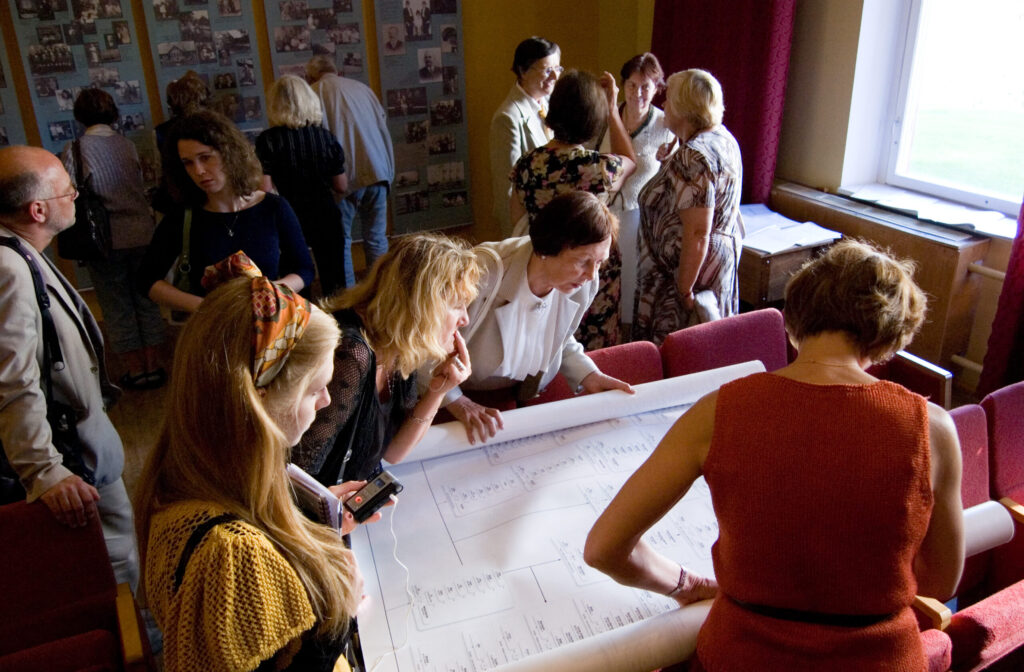
(3) Southern Finnic languages in Russia
a. Votic
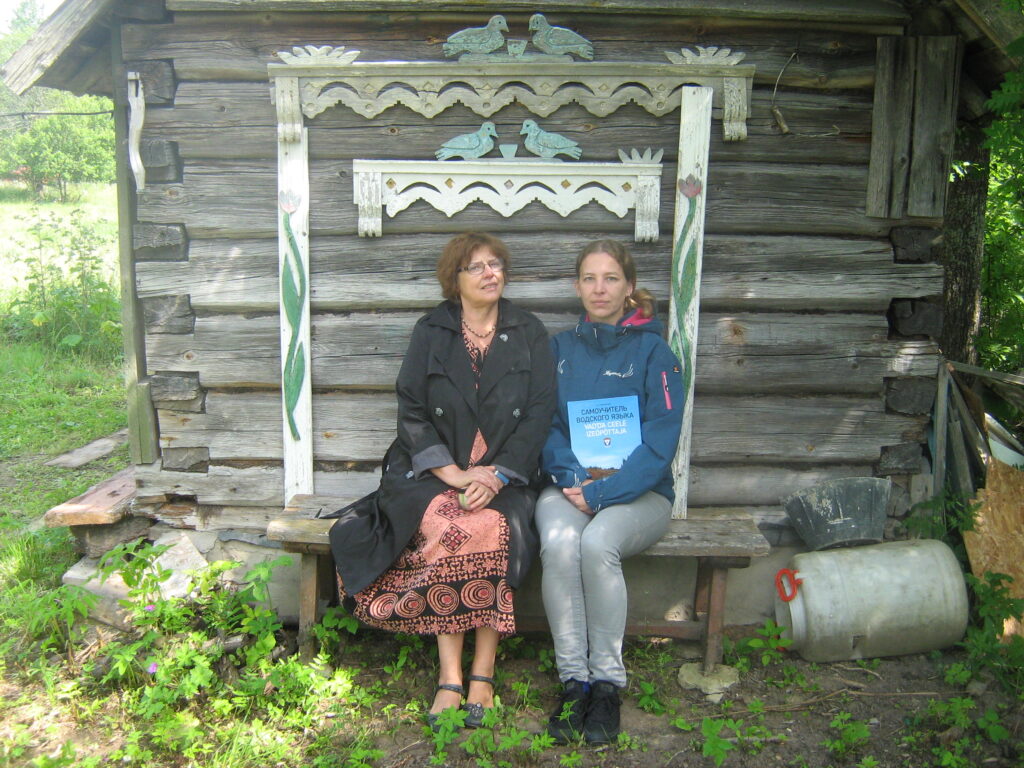
The Votic (ISO 639-3: vot, Glottocode: voti1245) homeland is in Ingria and the villages inhabited by Votic and Ingrian speakers have historically been near or alongside each other. This area is located in Kingisepp District in Leningrad Region in the Russian Federation near the present-day Estonian border. Historically, the Votians also lived in other areas, some of which extended into northeastern and eastern Estonia. Krevin (ISO 639-3: zkv, Glottocode: krev1234) – a Votic language island variety – was spoken until the 19th century in south-central Latvia near Bauska. At present, Votic speakers still live near the mouth of the Lauga River (Russian: Luga) in the villages of Jõgõperä (Krakol’e), Liivtšülä (Peski), and Luutsa/Luuditsa (Luzhitsy). According to the 2010 census, there were 64 Votians living in the Russian Federation. Also in 2010, there were 68 known speakers of Votic. (Source) Votic language documentation is ongoing and in recent years several books to support language learning (e.g., a course, a reader) and use (e.g., a phrasebook) have been published by Votic language researcher Heinike Heinsoo.
Photo: Votic language researcher Heinike Heinsoo (left) with project researcher Eva Saar (right) during fieldwork in Ingrian and Votic villages. Source: UT AEDKL, DF0041-002; Monastõrki, Russia, 2015.
b. Ingrian
The Ingrians (ISO 639-3: izh, Glottocode: ingr1248) have historically inhabited a number of villages along the Lauga (Russian: Luga) and Hevaha (Kovashi) Rivers as well as on the Soikkola (Soikino) and Kurgola (Kurgolovo) peninsulas. These areas are located in Kingisepp and Lomonosov Districts in Leningrad Region in the Russian Federation. According to the 2010 census, there were 266 Ingrians living in the Russian Federation. Also in 2010, there were 123 known speakers of Ingrian. (Source) Unlike the other languages in this project, Ingrian is a Northern Finnic language, but nevertheless it shares certain (morpho)phonological and morphosyntactic innovations and peculiar typological features with Southern Finnic.
Photo: EM researcher R. Piiri interviews Natalja Nikiforovat (wife of Ilja Konstantinov), born: 1909 (Ingrians). Source: Aado Lintrop, 1979, ERM Fk 1979:60
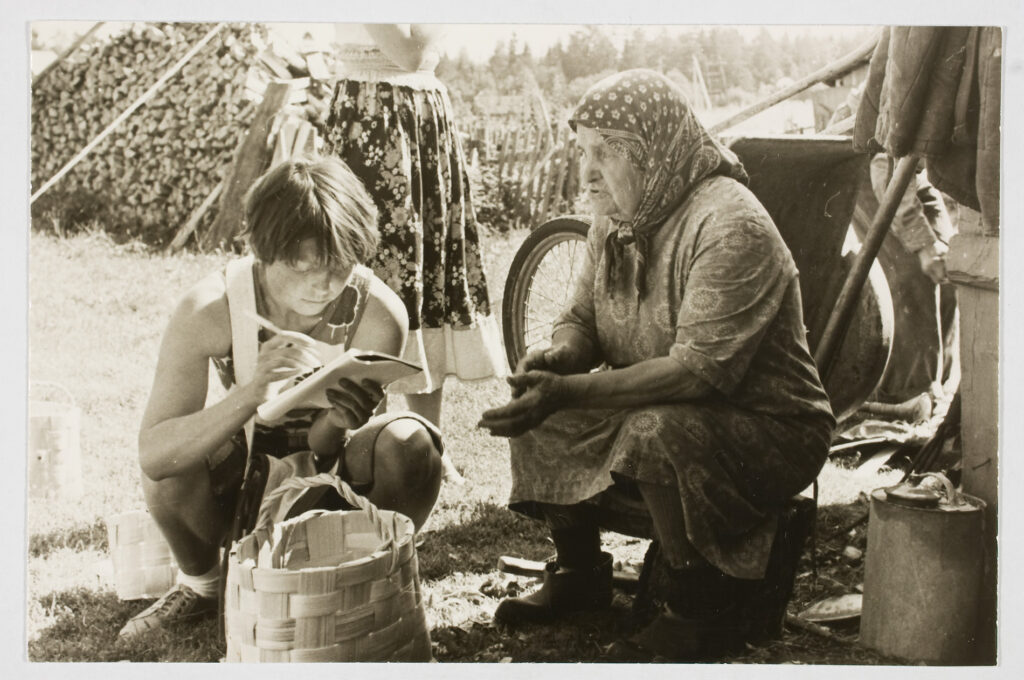
c. South Estonian varieties
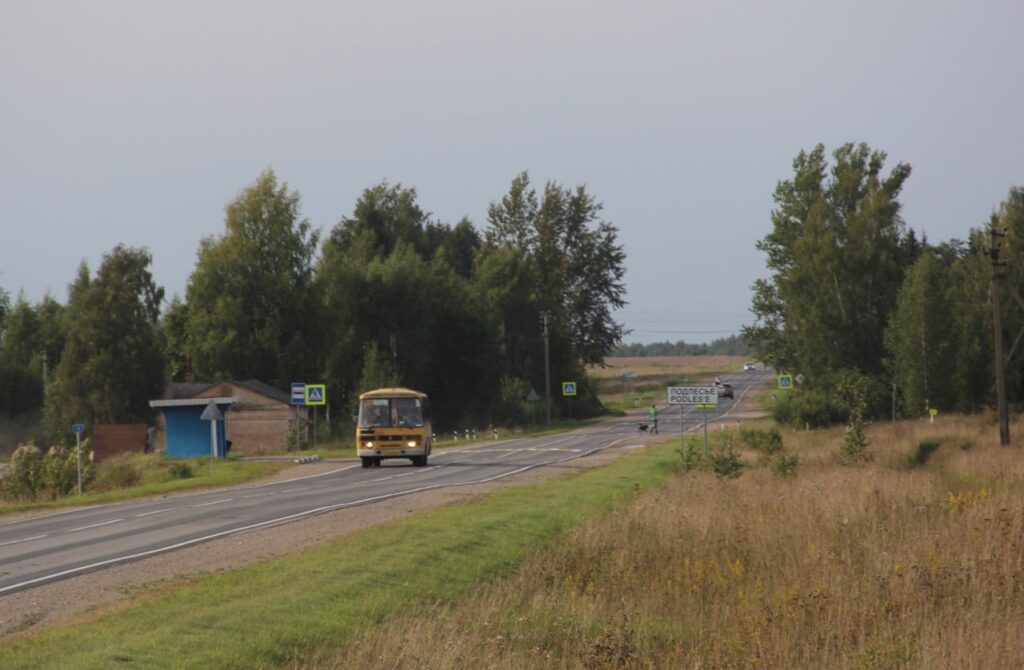
Eastern Seto
Eastern Seto (Glottocode: east2808) is spoken in Petseri (Pechory) and in the other Seto villages located east of the present-day Estonian-Russian border. Eastern Seto has been heavily influenced by contact with Russian, while having little contact with western Seto varieties or the Estonian literary language. Though Russian loanwords are also found in other Seto varieties, some are more prevalent in Eastern Seto, e.g., joosś, koomot, räbinäs, tsäädsä, plaavatama, cf. ёж (jož) ‘hedgehog’, комната (kómnata) ‘room’, рябина (rjabína) ‘rowan tree’, дядя (djádja) ‘uncle’, плавать (plávatʹ) ‘to swim’.
A country road near the Seto village of Mitkovitsy. Source: Uldis Balodis; Mitkovitsy & Podles’e, Setomaa, 2019
Kraasna
The only one of the three South Estonian language island varieties (Kraasna, Leivu, Lutsi) historically not spoken in Latvia. Kraasna (Glottocode: kraa1234) was documented in the early 20th century by Estonian researcher Oskar Kallas and Finnish researcher Heikki Ojansuu. Spoken in a network of villages near the town of Krasnogorodsk, Russia near the present-day border with Latvia and only a few dozen kilometers distance from the northernmost Lutsi villages, Kraasna was the first of the South Estonian language island varieties to cease being spoken in daily life – likely already prior to World War II. In 1952 and 1966, Estonian researcher Paulopriit Voolaine still found a few individuals with fragmentary knowledge of Kraasna and, in 2004, a University of Tartu expedition found two families in the village of Ivatsova who were still aware of their Estonian roots. The Kraasna people and their communities are further described here.
Photo: Kraasna rememberer Jegor Vassiljev with his wife. Source: Paulopriit Voolaine, 1966, Mõisa (Myza), Russia, ERM Fk 1508: 138
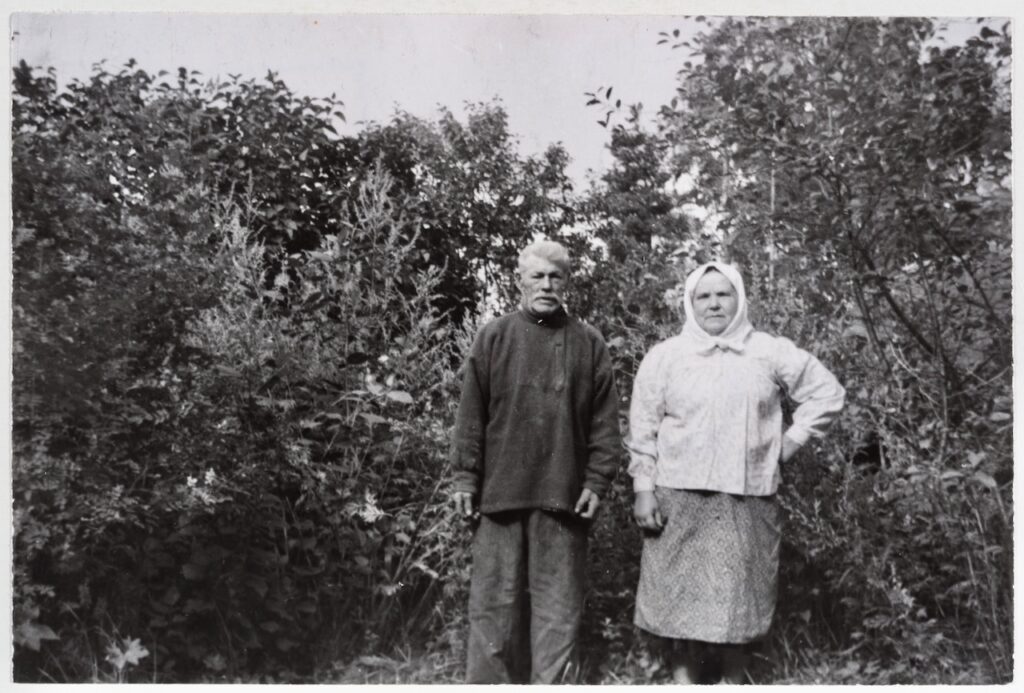
Header image: Livonian language field notes recorded by Oskar Loorits from Didrik Brenkou in Sīkrõg (Sīkrags), Latvia, 1922. (Source: University of Tartu Archives of Estonian Dialects and Kindred Languages, record number LFS0244)


